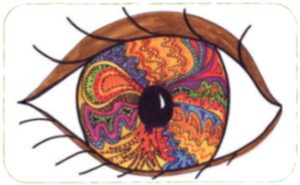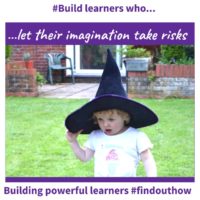If you have a well formed Imagining habit you will be ready, willing, and able to:
- Use the mind as a theatre in which to play out ideas and possible actions experimentally;
- Use a rich variety of visual, aural and sensory experiences to trigger creative and lateral thinking;
- Explore possibilities speculatively, saying ‘What might …’, ‘What could …’ and ‘What if …?’ rather than being constrained by what is;
- Retain a childlike playfulness when confronted with challenges and difficulties;
- Be aware of intended outcomes whilst adopting a flexible approach to realising goals;
- Rehearse actions in the mind before performing them in reality.
Spot the Imaginers in your classes
Just to get you tuned in – have a quick think about ‘imaginers you may know’. Make a note of students you know who display these characteristics.
Being a teacher who develops students’ learning power means developing a keen awareness of the subtleties of your students’ learning behaviours.
What do you think?
- How many of your students come to mind when looked at through the lens of imagining?
- Is there a gender balance or have you noted down more girls than boys or vice versa?
- Are the students you have noted from across all age groups or do some dominate?
- How do these imagining characteristics help these students to be better learners?
Make a note of…
- Those groups or classes that seem to have lots of good imagining characteristics.
- How you think you might capitalise on this.
An activity to try: The Mind’s Eye
 Introduce pupils to the idea of the mind’s eye: Talk about the fact that we all have 2 eyes which we use all the time but that everyone also has a third, hidden, mind’s eye. Talk about how we can use this secret third eye to imagine and create pictures and ideas inside our minds.
Introduce pupils to the idea of the mind’s eye: Talk about the fact that we all have 2 eyes which we use all the time but that everyone also has a third, hidden, mind’s eye. Talk about how we can use this secret third eye to imagine and create pictures and ideas inside our minds.
Invite pupils to close their eyes and imagine they are using their third eye. Describe something in great detail and ask them to try and see it with their third eye.
For example: Close your eyes tightly and imagine my alien. It has a large, round, green body with lots of arms and legs. On the top of the round, green body is a huge pink and purple head with spiky yellow hair and 4 great big blue eyes. It has long, pink fingers on its hands and short, purple toes on its big feet. When it walks along it makes a high squeaky sound and it smells just like fish and chips!
- You could ask pupils to draw their idea of the alien, concentrating on their ideas rather than an exact representation of your description.
- Ask pupils to imagine something for themselves- unprompted by you. Invite them to describe what they are imagining.
- Talk about what seems to happen in their mind when they imagine.
- Talk about when our ability to imagine can be useful.
- Ask, “When do you use your imagination?”



No comments yet.